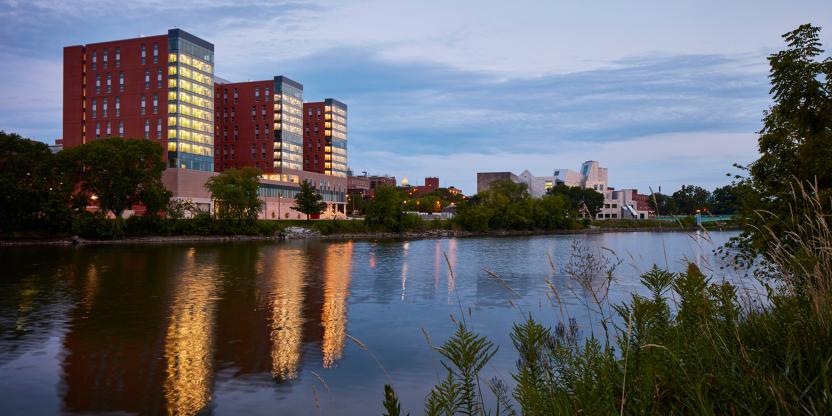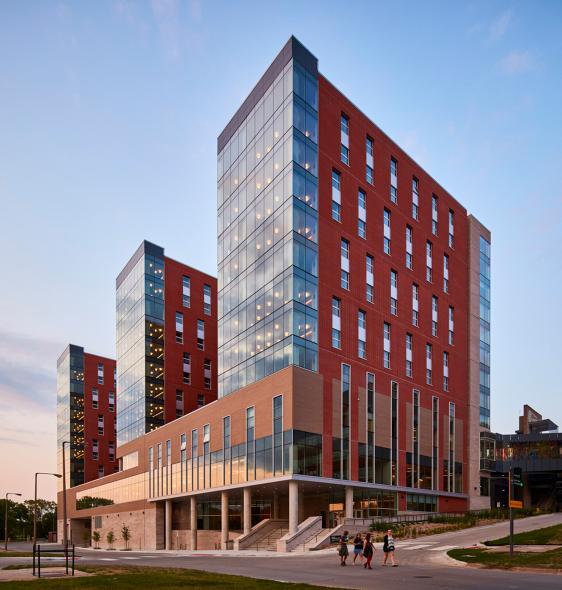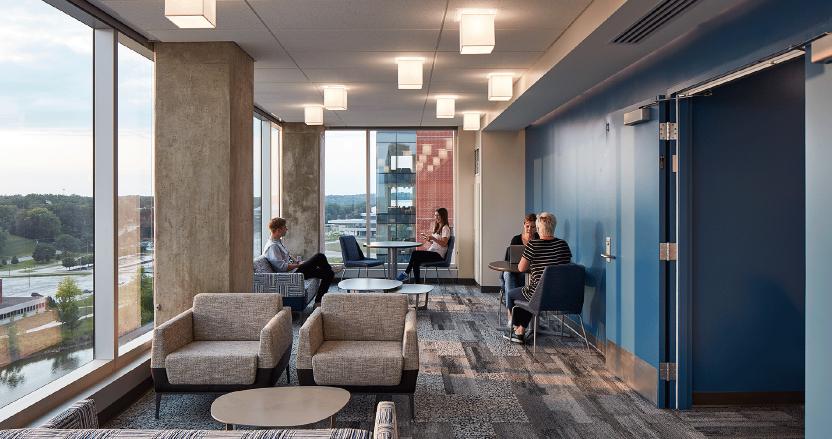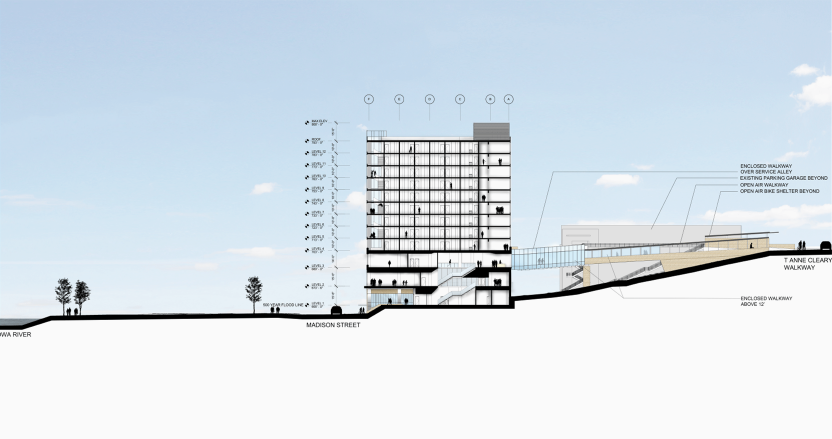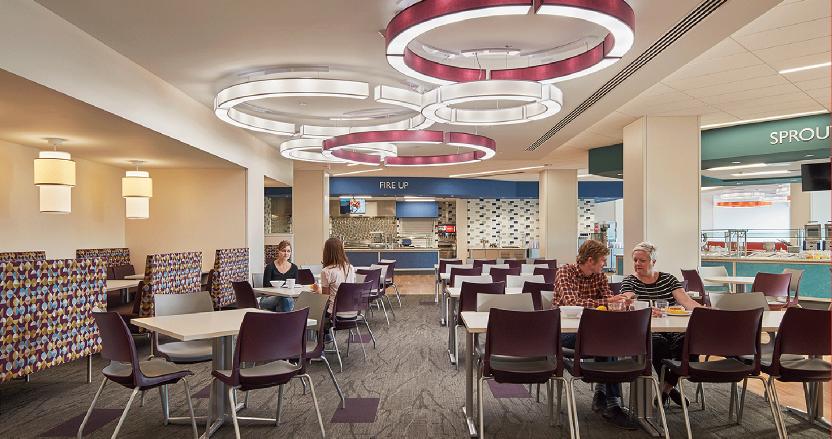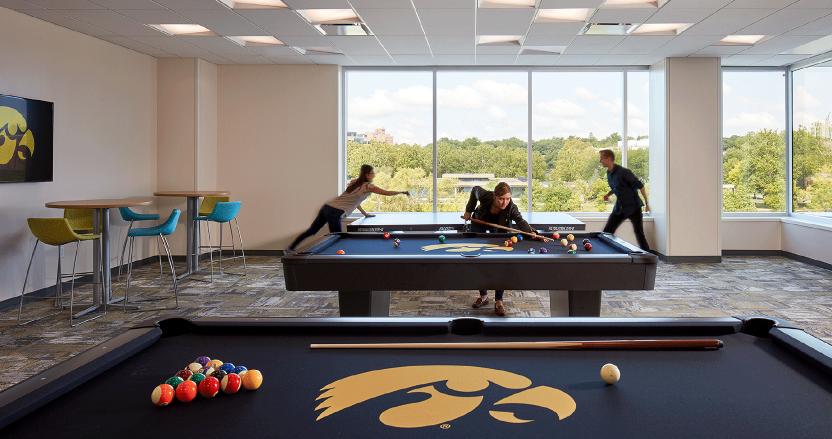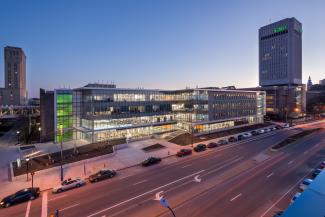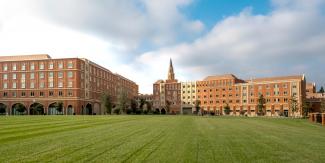A celebrated sculptor and printmaker, in 1940 University of Iowa alumna Elizabeth Catlett became the first African American woman to earn a Master of Fine Arts (MFA) degree in the United States. Named in her honor, Elizabeth Catlett Hall not only celebrates her life and legacy, but also addresses a critical shortage of university undergraduate housing.
Strong support indicates that the interconnectedness, inclusivity and social bonds established by living on-campus positively impact undergraduate students’ well-being and performance. But the University, previously operating at 100% housing capacity, was unable to offer on-campus housing to all undergraduates, prompting many to secure off-campus accommodations.
Overcoming the twin challenges of FAA height restrictions and flood plains, HED’s design for the new residence hall incorporates an additional floor, increasing the unit count from 900 to 1049 despite the stringent spatial limitations.
Located alongside the peaceful Iowa River, the new hall includes permanent exhibits of Catlett’s work, as well as a dining hall, fitness center, study rooms and six living-learning communities, with plans to develop additional outdoor spaces. Designed to maximize both its natural setting and proximity to the university’s undergraduate core, the building features calming river views from every room, while pedestrian, public transit and bike routes interweave the new structure with the existing campus, ensuring student safety and creating a seamless exchange between campus and residence.
The result? Learning that extends far beyond the classroom, a strengthened sense of connectivity and belonging, and a supportive, surrounding campus community that ensures every resident feels truly at home.
Strong support indicates that the interconnectedness, inclusivity and social bonds established by living on-campus positively impact undergraduate students’ well-being and performance. But the University, previously operating at 100% housing capacity, was unable to offer on-campus housing to all undergraduates, prompting many to secure off-campus accommodations.
Overcoming the twin challenges of FAA height restrictions and flood plains, HED’s design for the new residence hall incorporates an additional floor, increasing the unit count from 900 to 1049 despite the stringent spatial limitations.
Located alongside the peaceful Iowa River, the new hall includes permanent exhibits of Catlett’s work, as well as a dining hall, fitness center, study rooms and six living-learning communities, with plans to develop additional outdoor spaces. Designed to maximize both its natural setting and proximity to the university’s undergraduate core, the building features calming river views from every room, while pedestrian, public transit and bike routes interweave the new structure with the existing campus, ensuring student safety and creating a seamless exchange between campus and residence.
The result? Learning that extends far beyond the classroom, a strengthened sense of connectivity and belonging, and a supportive, surrounding campus community that ensures every resident feels truly at home.
